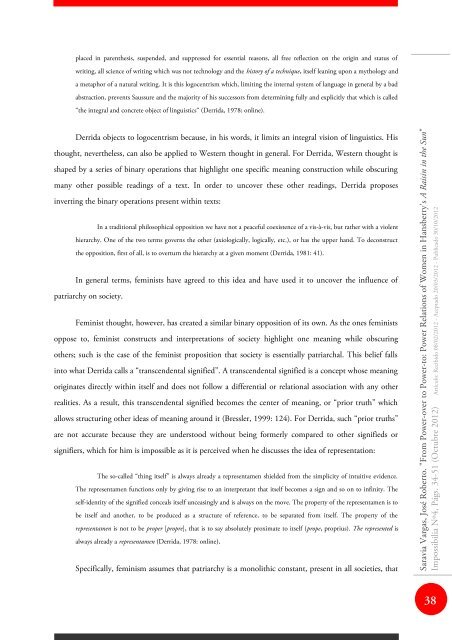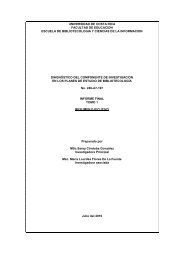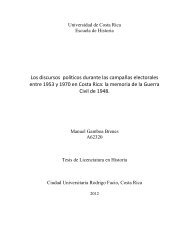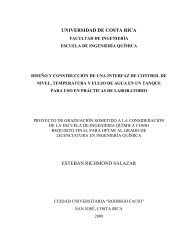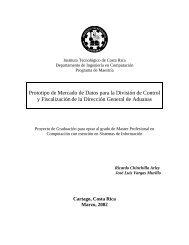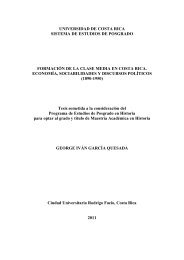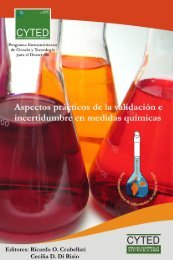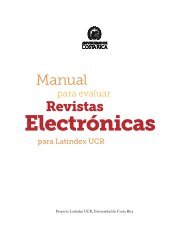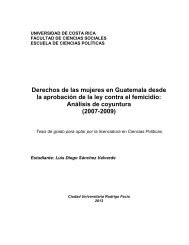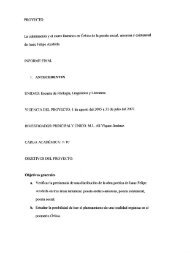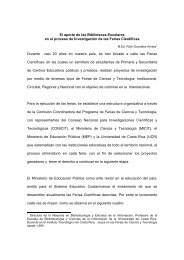A Raisin in the Sun
A Raisin in the Sun
A Raisin in the Sun
You also want an ePaper? Increase the reach of your titles
YUMPU automatically turns print PDFs into web optimized ePapers that Google loves.
placed <strong>in</strong> paren<strong>the</strong>sis, suspended, and suppressed for essential reasons, all free reflection on <strong>the</strong> orig<strong>in</strong> and status of<br />
writ<strong>in</strong>g, all science of writ<strong>in</strong>g which was not technology and <strong>the</strong> history of a technique, itself lean<strong>in</strong>g upon a mythology and<br />
a metaphor of a natural writ<strong>in</strong>g. It is this logocentrism which, limit<strong>in</strong>g <strong>the</strong> <strong>in</strong>ternal system of language <strong>in</strong> general by a bad<br />
abstraction, prevents Saussure and <strong>the</strong> majority of his successors from determ<strong>in</strong><strong>in</strong>g fully and explicitly that which is called<br />
“<strong>the</strong> <strong>in</strong>tegral and concrete object of l<strong>in</strong>guistics“ (Derrida, 1978: onl<strong>in</strong>e).<br />
Derrida objects to logocentrism because, <strong>in</strong> his words, it limits an <strong>in</strong>tegral vision of l<strong>in</strong>guistics. His<br />
thought, never<strong>the</strong>less, can also be applied to Western thought <strong>in</strong> general. For Derrida, Western thought is<br />
shaped by a series of b<strong>in</strong>ary operations that highlight one specific mean<strong>in</strong>g construction while obscur<strong>in</strong>g<br />
many o<strong>the</strong>r possible read<strong>in</strong>gs of a text. In order to uncover <strong>the</strong>se o<strong>the</strong>r read<strong>in</strong>gs, Derrida proposes<br />
<strong>in</strong>vert<strong>in</strong>g <strong>the</strong> b<strong>in</strong>ary operations present with<strong>in</strong> texts:<br />
In a traditional philosophical opposition we have not a peaceful coexistence of a vis-à-vis, but ra<strong>the</strong>r with a violent<br />
hierarchy. One of <strong>the</strong> two terms governs <strong>the</strong> o<strong>the</strong>r (axiologically, logically, etc.), or has <strong>the</strong> upper hand. To deconstruct<br />
<strong>the</strong> opposition, first of all, is to overturn <strong>the</strong> hierarchy at a given moment (Derrida, 1981: 41).<br />
In general terms, fem<strong>in</strong>ists have agreed to this idea and have used it to uncover <strong>the</strong> <strong>in</strong>fluence of<br />
patriarchy on society.<br />
Fem<strong>in</strong>ist thought, however, has created a similar b<strong>in</strong>ary opposition of its own. As <strong>the</strong> ones fem<strong>in</strong>ists<br />
oppose to, fem<strong>in</strong>ist constructs and <strong>in</strong>terpretations of society highlight one mean<strong>in</strong>g while obscur<strong>in</strong>g<br />
o<strong>the</strong>rs; such is <strong>the</strong> case of <strong>the</strong> fem<strong>in</strong>ist proposition that society is essentially patriarchal. This belief falls<br />
<strong>in</strong>to what Derrida calls a “transcendental signified”. A transcendental signified is a concept whose mean<strong>in</strong>g<br />
orig<strong>in</strong>ates directly with<strong>in</strong> itself and does not follow a differential or relational association with any o<strong>the</strong>r<br />
realities. As a result, this transcendental signified becomes <strong>the</strong> center of mean<strong>in</strong>g, or “prior truth” which<br />
allows structur<strong>in</strong>g o<strong>the</strong>r ideas of mean<strong>in</strong>g around it (Bressler, 1999: 124). For Derrida, such “prior truths”<br />
are not accurate because <strong>the</strong>y are understood without be<strong>in</strong>g formerly compared to o<strong>the</strong>r signifieds or<br />
signifiers, which for him is impossible as it is perceived when he discusses <strong>the</strong> idea of representation:<br />
The so-called “th<strong>in</strong>g itself” is always already a representamen shielded from <strong>the</strong> simplicity of <strong>in</strong>tuitive evidence.<br />
The representamen functions only by giv<strong>in</strong>g rise to an <strong>in</strong>terpretant that itself becomes a sign and so on to <strong>in</strong>f<strong>in</strong>ity. The<br />
self-identity of <strong>the</strong> signified conceals itself unceas<strong>in</strong>gly and is always on <strong>the</strong> move. The property of <strong>the</strong> representamen is to<br />
be itself and ano<strong>the</strong>r, to be produced as a structure of reference, to be separated from itself. The property of <strong>the</strong><br />
representamen is not to be proper [propre], that is to say absolutely proximate to itself (prope, proprius). The represented is<br />
always already a representamen (Derrida, 1978: onl<strong>in</strong>e).<br />
Specifically, fem<strong>in</strong>ism assumes that patriarchy is a monolithic constant, present <strong>in</strong> all societies, that<br />
Saravia Vargas, José Roberto. "From Power-over to Power-to: Power Relations of Women <strong>in</strong> Hansberry's A <strong>Rais<strong>in</strong></strong> <strong>in</strong> <strong>the</strong> <strong>Sun</strong>"<br />
Impossibilia Nº4, Págs. 34-51 (Octubre 2012) Artículo: Recibido 08/02/2012 - Aceptado 20/03/2012 - Publicado 30/10/2012<br />
38


